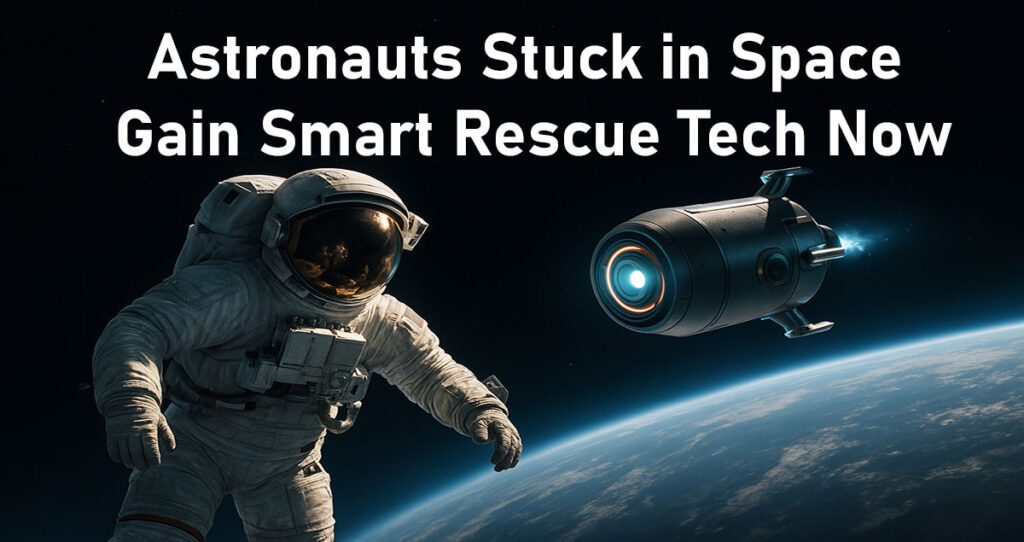Nowadays, advanced rescue technologies help astronauts who have become stranded in space by providing many ways to reach Earth. Lately, the rescue work done by the SpaceX Dragon for stranded astronauts proves how advanced technology can bring a craft back with the crew. These advanced rescue methods include SpaceX Dragon ships, NASA has new guidelines, there are automated emergency systems, and there is collaboration with different nations. Technology that has been proven and creative safety methods have made current astronauts in space much more likely to survive mishaps during their missions.
The Reality Check: Space Missions Don’t Always Go as Planned
Let’s face it, space travel is risky business. Regardless of how much time and money are put into safety, accidents can happen while people work in space. Recently, two NASA astronauts were supposed to end their eight-day trip, but because of problems with the spacecraft, they had to stay longer than planned. A regular test flight in early June 2024 became a nine-month stay for the Boeing Starliner capsule because it had safety issues.
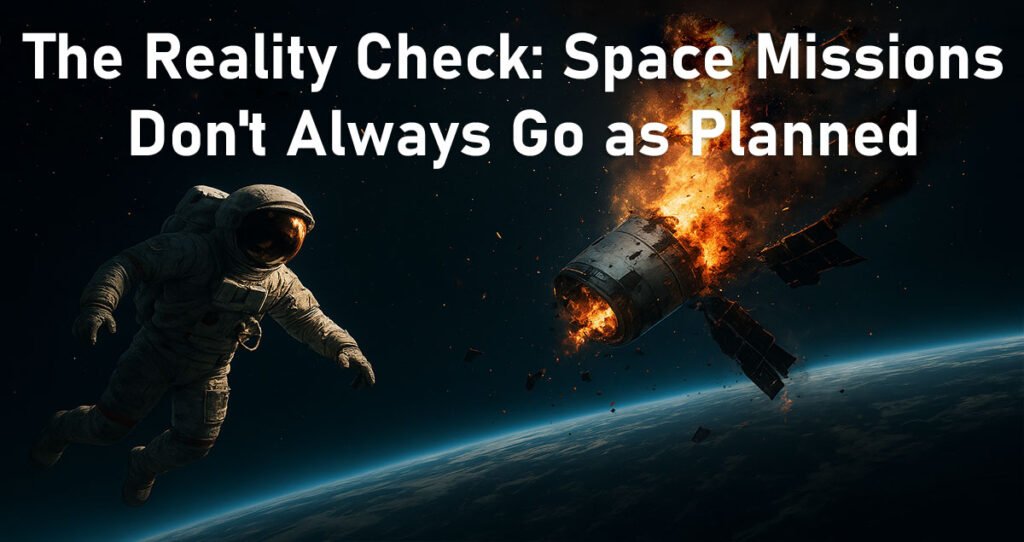
This isn’t science fiction – it’s the reality that space agencies prepare for every single day. Mechanical failures, software glitches, weather delays, and even supply chain problems can leave astronauts stuck in space far longer than anyone planned. The good news? We now use rescue technologies that are much more advanced than they were only a decade ago.
If your car has a problem on the highway, you contact roadside assistance. Rescuing someone up in orbit (going at speeds higher than 17,500 miles per hour)is much more challenging than saving someone on the ground. You cannot go to the local gas station or hope a tow truck will come to your car. It all depends on having perfect systems, having backups for each backup plan, and being precise on time.
The psychological impact on astronauts stuck in space adds another layer of complexity. Suppose someone tells you your trip away from home will be much longer than expected, and you can’t go back home early. Even though those people are highly skilled, they still have ordinary lives and people back on Earth.
Today’s situation differs since there are more ways to save lives compared to before. Before, astronauts used just one spacecraft and one agency’s help, but that has changed now. Many companies, governments, and technological tools are now teaming up to rescue everyone in space.
SpaceX Dragon: The Game-Changer Everyone’s Talking About
Usually, when we talk about space rescue today, the SpaceX Dragon stands out, and that is quite justified. Besides being a spacecraft, this is a new way we approach space travel and handling emergencies. Dragon has taken part in many rescue missions, and it is still the reliable transport that helps us reach and return from the International Space Station.
Why is the Dragon capsule different from other types of spacecraft? It serves many purposes over the years because you can use it more than once. A big difference from earlier times is that Dragon capsules are recycled, fixed, and used again after coming back to Earth. Due to this, we can offer more flights, save money, and provide a greater chance to help out in case problems arise.
It’s amazing how many tasks can be done automatically by the spacecraft. The Dragon is designed to dock with the International Space Station automatically, even at the final stage. This way, astronauts don’t have to concentrate on the technical aspects of flying and can worry more about their well-being.
Safety is based on decades of experience gained from using spaceships. Its SuperDraco engines can blast the crew capsule away from a failing rocket during launch – something that could save lives in catastrophic failure scenarios. The heat shield technology has been tested and proven through multiple missions, giving everyone confidence that astronauts will make it safely through reentry.
Dragon Capsule Key Specifications:
| Feature | Specification | Benefit |
| Crew Capacity | Up to 7 astronauts | Can accommodate full rescue missions |
| Mission Duration | 210 days docked to ISS | Extended rescue mission capability |
| Cargo Capacity | 6,000 kg pressurized | Can bring supplies during rescue |
| Launch Abort | SuperDraco engines | Emergency escape during launch |
| Reusability | Multiple flights per capsule | Cost-effective, frequent availability |
There is sufficient evidence of his success. SpaceX has helped send various astronauts to the International Space Station, and every mission increases the system’s trustworthiness. Whenever astronauts are stranded in space, the Dragon capsule has always been ready to carry them home.
NASA’s Evolved Rescue Playbook
Being the world’s top space agency didn’t happen to NASA by chance. Every great space mission and every major rescue takes advantage of years of gathered knowledge, proper planning, and lessons from both positive and negative experiences. The rescue plan used by the agency comes from all the lessons learned during the initial stages of human spaceflight.

The modern NASA approach to rescue operations starts long before anyone gets stuck in space. Every mission launches with detailed contingency plans already in place. These aren’t just theoretical exercises – they’re practical, tested procedures that can be activated immediately when problems arise. Mission planners spend months identifying potential failure modes and developing response strategies for each scenario.
Rescue operations at NASA greatly rely on the help of other countries. The agency maintains relationships with other space organizations so that they are always ready to help, regardless of the country that conducted a mission. Since there is a global network, astronauts having trouble might be saved by craft from the United States, Russia, Europe, Japan, or commercial companies, based on what is feasible and suitable.
Being well-trained is an essential aspect of NASA’s rescue effort. Astronauts are taught to handle unexpected situations during training. Examples are dealing with emergencies such as injury, machinery, and facility failures, and arranging full evacuation plans. Having this training is especially useful when astronauts must act rapidly in case of a crisis.
Over the years, the agency’s medical monitoring abilities have advanced a lot. It is now possible for medical team members on the ground to monitor astronauts’ health very closely, allowing them to catch possible issues early. Thanks to the constant monitoring, NASA determines the need for rescue and when to carry it out as swiftly as possible.
NASA Emergency Response Timeline:
| Phase | Duration | Key Activities |
| Initial Assessment | 0-4 hours | Evaluate the situation, activate emergency protocols |
| Planning Phase | 4-24 hours | Develop rescue options, coordinate resources |
| Preparation | 1-7 days | Prepare spacecraft, brief crews, and final checks |
| Rescue Execution | Variable | Launch, rendezvous, crew transfer, return |
| Post-Mission | 30+ days | Medical evaluation, mission analysis, and improvements |
Crew Dragon: Technical Marvel Behind the Headlines
While most people see the Crew Dragon as just another spacecraft, engineers and safety experts recognize it as a masterpiece of modern engineering. Every system has been designed with redundancy and safety as the top priorities, creating a vehicle that’s not just capable but genuinely trustworthy for the most demanding rescue missions.
Crew Dragon contains life support systems that show the progress made in maintaining the environment over the past decades. Being able to provide a safe and cozy environment for its crew can last for weeks, which is vital in case a rescue mission gets delayed due to different kinds of challenges. Space station air recycling is so successful that it can keep astronauts healthy and operational for longer rescuing situations.
Navigation and guidance systems on the Crew Dragon utilize both GPS and star tracking for unprecedented accuracy during orbital operations. This precision is essential when approaching the International Space Station or other spacecraft for rescue operations. The margin for space error is essentially zero – you either dock successfully, or you don’t get to try again for several orbits.
The spacecraft’s communication systems maintain constant contact with ground control and other spacecraft throughout rescue operations. This connectivity allows real-time troubleshooting, medical consultation, and coordination with multiple rescue assets if needed. Astronauts stuck in space never have to face their situation alone – they have entire teams of experts supporting them from the ground.
The Crew Dragon’s heat shield has been tried in many reentries, so it is fully able to transport astronauts home safely. The heat shield on PICA-X is tough enough to withstand high-temperature reentry and ensures the crew has a comfortable trip. With this strong technology, Dragon capsules can fly several times before being refurbished, which lowers the costs involved in rescue missions.
Crew Dragon Safety Systems:
| System | Function | Redundancy Level |
| Life Support | Air, water, and waste management | Triple redundant |
| Propulsion | Orbital maneuvering, emergency abort | Quad redundant |
| Navigation | Docking, reentry guidance | Dual redundant with backup |
| Communication | Ground contact, telemetry | Multiple frequencies/systems |
| Heat Shield | Reentry protection | Single use, proven reliable |
Space Capsule Evolution: Learning from Every Mission
There is a fascinating history behind the development of spaceships, starting with early capsules and ending with the advanced tools we use for rescues today, as a result of both positive achievements and bad incidents. Every new spacecraft takes what has come from previous trips, which has increased the reliability of space missions.
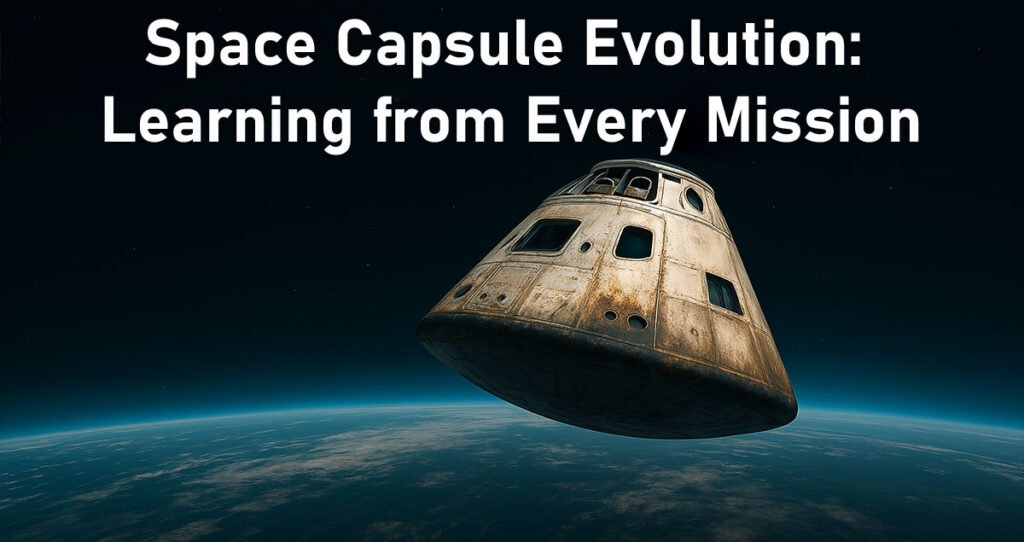
Mainly, the space capsules of the Mercury, Gemini, and Apollo missions were built for testing purposes. As they carried out their missions, their planes did not have important safety features like those we use today. Information we learned about life support, protective shields, and the safety of the crew from these first models is still used in modern designs.
Reusability and larger crews were made possible during the Space Shuttle era, and the era also pointed out how crucial strong safety standards and deep testing were. Influence from key data collected in the shuttle program helped create the Dragon capsule and Starliner spacecraft.
Today’s space capsules take advantage of improvements in materials, computing, and technology that were not accessible to earlier people. Such materials allow me to carry more without increasing my weight, and they are also highly resistant to heat. Currently, computer systems can constantly observe a huge range of conditions and act for themselves when no human supervision is necessary.
Modern space capsules are designed in a way that goes against the traditional way of doing so. Modern spacecraft aim to be safe, reliable, and efficient, instead of trying to accomplish a lot of complex tasks. Because of this strategy, spaceships are not the fastest or most powerful, but they securely bring astronauts back and help keep them safe during flights.
Space Capsule Evolution Timeline:
| Era | Representative Vehicle | Key Innovation | Safety Advancement |
| 1960s | Apollo Command Module | Heat shield mastery | Reliable reentry technology |
| 1980s-2010s | Space Shuttle | Reusability | Crew escape systems |
| 2010s-Present | SpaceX Dragon | Commercial crew | Automated safety systems |
| Future | Next-gen vehicles | AI integration | Predictive safety systems |
International Space Station: The Ultimate Safe Haven
Apart from performing research, the International Space Station is the most well-equipped space shelter for astronauts. Should there be issues when a mission is in progress, the ISS acts as a refuge where astronauts are kept secure until help arrives.
The station’s rescue equipment can support a greater number of astronauts than are living there, which is very useful in an emergency. Anytime extra crew people need to join the ISS for rescue calls or an extended mission, the station provides the necessary room and precautions. The ability to respond flexibly has benefited people in real emergencies.
Multiple docking ports on the ISS ensure that rescue spacecraft can arrive regardless of which other vehicles might be present. The station can simultaneously host American Dragon capsules, Russian Soyuz spacecraft, and other international vehicles. This capability means that rescue operations don’t have to wait for other spacecraft to depart before proceeding.
The ISS also serves as a communication hub for rescue operations, with multiple communication systems providing redundant contact with ground control centers around the world. If any astronauts get into trouble in space, the station’s communication technology helps them work together with their rescuers.
Emergency kits on the International Space Station come with medical items, extra nutrition, extra equipment for the ship, and tools that may be useful during long rescue missions. Supplies are always kept intact and restocked so they can be used whenever they are needed.
ISS Emergency Capabilities:
| Resource | Normal Capacity | Emergency Capacity | Duration |
| Crew Support | 3-7 astronauts | Up to 10 astronauts | 6+ months |
| Life Support | Continuous operation | 150% capacity | Indefinite with resupply |
| Communication | 24/7 contact | Multiple redundant systems | Continuous |
| Medical Care | Basic treatment | Advanced diagnostics | Extended care capable |
| Docking Ports | 2-3 vehicles | Up to 6 vehicles | Simultaneous operations |
Smart Tech Revolution in Space Rescue
Space agencies rely more on artificial intelligence and smart technology to save astronauts stuck in orbit. With these systems, huge volumes of data can be handled in moments, possible problems can be spotted early, and the best solutions can be given that people under pressure could overlook.
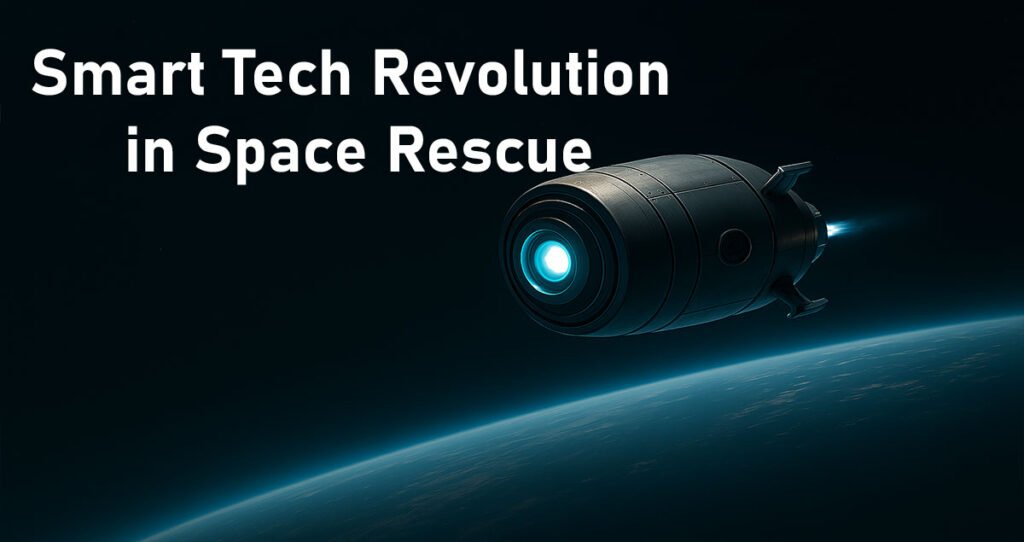
Spacecraft are now being regularly monitored by predictive analytics, which pores through data in search of possible future troubles. Thanks to these systems, teams in charge of rescue are alerted to small changes that demonstrate an imminent malfunction, giving them time to plan better. Thanks to its ability, many potential emergencies have been avoided from turning into rescue situations.
Automation has made it possible for spacecraft systems to carry out most of the complex maneuvers required for rescue missions themselves. Rescue spacecraft in space can find the best flight paths, manage complicated movements, and join with space stations or other spacecraft without much help from the astronauts. The automation helps astronauts by reducing their work and decreasing the chances of mistakes during necessary missions.
Machines help improve rescue methods by studying data obtained from past events and exercises. Each time a rescue happens, there is new information that supports making the emergency system even more effective later.
Tracking health data in real time alerts medical staff to potential issues that astronauts might have before these turn into serious problems. Such systems help improve astronauts’ health and mood, which is crucial when rescue missions become very long and demanding.
Smart Technology Applications:
| Technology | Application | Benefit |
| Predictive Analytics | System failure prediction | Early warning capabilities |
| AI Navigation | Automated docking/maneuvering | Reduced human error |
| Machine Learning | Procedure optimization | Continuous improvement |
| Health Monitoring | Real-time medical assessment | Preventive medical care |
| Communication AI | Multi-language coordination | International cooperation |
Medical Monitoring: Keeping Astronauts Healthy
The well-being of those stuck in space plays a vital role in rescuing astronauts. Current medical monitoring systems make it possible to closely watch astronauts’ health, which allows ground-based doctors to guide and support rescue efforts during situations that last for days.
Such devices track your heart rate, blood pressure, the speed of breathing, and your body temperature all the time. The information is transmitted back to medical teams on Earth, and they can spot any health concerns and advise on the best actions. Such systems are created to perform reliably in space and be comfortable to wear for a long time when things get tough.
The use of high-tech medical instruments in space helps doctors examine patients more closely. Having ultrasound machines, blood analysis instruments, and other tools gives astronauts the ability to conduct advanced medical procedures with the help of specialists away from Earth. It plays a key role while astronauts take part in extended rescue missions, as their health may decline.
In space, medical specialists use telemedicine to offer fast advice and help during any emergencies that occur. Video links with high definition allow doctors to watch patients and give guidance for their treatment while working from other locations. The use of this technology for regular activities has succeeded, and it will be very important during rescue operations.
Organizations focus on psychological care for astronauts who deal with challenges or emergencies during space missions. Staying in space for a long period, being distant from family, and dealing with emergencies often distresses astronauts’ minds. Nowadays, people in the military can talk to psychologists by video and use virtual reality to experience relaxation and mental exercises.
Medical Monitoring Capabilities:
| System | Monitoring Capability | Response Time | Intervention Options |
| Vital Signs | Continuous real-time | Immediate alerts | Medication guidance |
| Diagnostic Tools | On-demand detailed assessment | Within hours | Remote medical procedures |
| Telemedicine | Live consultation | Real-time | Expert medical guidance |
| Mental Health | Stress/mood monitoring | Daily assessment | Psychological support |
| Exercise Systems | Physical fitness tracking | Continuous | Fitness recommendations |
Communication Breakthroughs: Staying Connected
Communication has made the whole process more reliable, allowing astronauts, rescue workers, and centers on Earth to work together smoothly. Communication technologies today include many backup routes so that communication can be maintained when some of the systems are down.
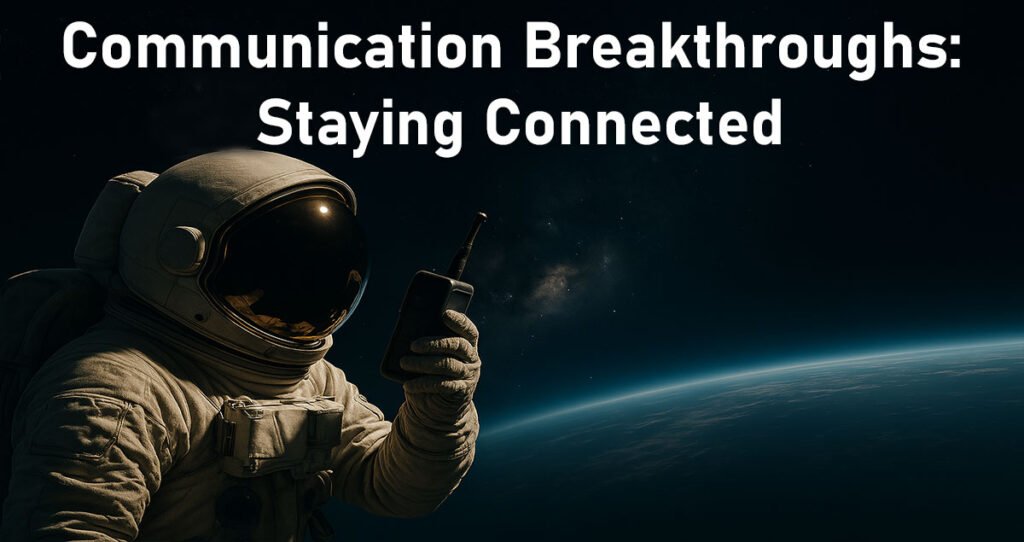
High-bandwidth satellite communication networks now provide global coverage for space rescue operations. By using many satellite constellations, it is possible to keep connections going no matter where the spacecraft are located or how they move. It is important because rescue operations often involve more than one spacecraft and different teams on the ground, and this way, messages are not lost.
Video communication capabilities have revolutionized how medical teams assess astronaut health and provide guidance during emergencies. Through high-definition video links, doctors can review patients and remotely direct various medical activities. Because of these systems, families can maintain contact with their loved ones, which greatly helps their emotional well-being.
Secure schemes in communication protect confidential data and let the selected staff access the data they need. Emergency management teams rely on secure, encrypted systems since they retain communication efficiency. These measures are necessary to safeguard both the operation’s details and the astronauts during rescue situations.
Modern signal processing and noise removal features keep the sound clear anytime, regardless of the space setting. Different types of communication tools enable various rescue teams to collaborate at once, improving the way they work together and making things happen faster when emergencies occur.
Communication System Specifications:
| System Component | Capability | Coverage | Reliability |
| Satellite Network | Global coverage | 100% orbital coverage | 99.9% uptime |
| Video Links | HD quality | Real-time streaming | Multiple backup systems |
| Voice Communication | Crystal clear audio | Multiple channels | Noise cancellation |
| Data Transmission | High-speed downloads | Real-time telemetry | Error correction |
| Emergency Beacons | Automated distress signals | Worldwide monitoring | 24/7 response |
Life Support: The Ultimate Safety Net
If an astronaut is stranded in space, advanced systems are there to keep them alive by giving them the resources required for survival until rescue comes. Over the past decade, they have greatly changed by being updated with the latest technology and what space missions have shown.
Managing the atmosphere involves ensuring an ideal level of oxygen, removing carbon dioxide, and controlling air pressure. In current systems, modern aircraft are able to keep more crew on board for an extended time, so delays and late crew additions do not become an issue. Advanced scrubbing processes clear out microscopic pollutants that might become hazardous when you are breathing them for a long time.
Water is recycled and purified with impressive efficiency, which allows space vehicles to keep a constant supply of water as long as needed. Spacecraft use complex filters that almost entirely clean and save the water found inside the cabin, as well as in wastewater products and humidity. They help protect astronauts for regular or emergency rescue procedures that may take a lot of time to complete.
Proper systems are needed to ensure those being rescued can get enough nutrition during extended missions. Spacecraft from today usually preserve foods that have a long shelf life, and some station-like space platforms, such as the ISS, can make some limited amounts of food. Astronauts need proper nutrition even more when they are staying in space for a long time because they undergo extra stress.
Lifesaving oxygen is available if the main supply system falters or when more crew members than allowed use the system. These systems include both stored oxygen and emergency oxygen generation capabilities that can buy precious time during rescue operations.
Life Support System Capacities:
| System | Normal Operation | Emergency Capacity | Duration |
| Atmospheric Control | 3-7 crew members | Up to 10 crew members | 6+ months |
| Water Recycling | 95% efficiency | Emergency reserves | Extended operation |
| Food Storage | 6-month supply | Emergency rations | 1+ year total |
| Oxygen Generation | Continuous production | Emergency backup | Indefinite with power |
| Waste Management | Standard processing | Increased capacity | Extended operation |
Looking Ahead: The Future of Space Rescue
In the future, space rescue technology will become even better at helping astronauts who get into difficulties beyond Earth. Space emergency and rescue procedures may be revolutionized by new technologies that are being developed now.

Autonomous rescue spacecraft will play a significant role in boosting rescue missions. Such space vehicles would be able to rapidly deliver supplies, set up ways to communicate or rescue astronauts from hazardous situations without any onboard pilots. AI technology would help spacecraft adjust to new challenges and make decisions while rescuing astronauts.
Remote areas research is designing new composites and smart materials that might boost the safety and durability of spacecraft. Minor damage to spacecraft could be repaired automatically by self-healing materials, and adaptive materials would improve its resistance to radiation and impacts from small meteorites. Using these materials may greatly decrease emergencies that need rescue teams.
In-space factories could support making needed items and rescue materials should they be required. In the event of long rescue operations, 3D printing and automated systems would be able to make essential tools, parts, and buildings for the rescue team. Having this helps reduce the need for Earth’s help in an emergency.
Quantum communication technology could allow for quick communication between people on Earth and spacecraft that may be very far away. Thanks to these systems, the communication problems in rescue operations would be eliminated, which would help coordinators handle missions to the Moon, Mars, and beyond.
Future Technology Timeline:
| Technology | Development Status | Expected Availability | Impact on Rescue Operations |
| Autonomous Rescue Craft | Early development | 2027-2030 | Rapid response capability |
| Self-Healing Materials | Laboratory testing | 2028-2032 | Reduced emergency frequency |
| In-Space Manufacturing | Limited deployment | 2025-2028 | On-demand repair capability |
| Quantum Communication | Research phase | 2030-2035 | Instantaneous coordination |
| AI Medical Systems | Early trials | 2026-2029 | Enhanced medical care |
Real-World Success Stories
The success of modern space rescue technology has been demonstrated many times when astronauts got into difficulty in space and required help to return home. We can see from the results how far we have come in offering reliable rescue services.
Just recently, two NASA astronauts remained on the International Space Station when their Starliner failed to work as planned. The Dragon spacecraft carried the astronauts back to Earth following a long stay that was much longer than first expected.
Sometimes, problems such as machinery failure, weather delays, and breaks in the supply chain have caused these missions to take more time than expected. Whenever there was an emergency, life support systems, efforts by several countries, and multiple attempts to rescue astronauts saw them return safely home.
With the help of better technology and improved plans, these operations are being completed more successfully. Nowadays, thanks to reliable technology, staying in space for a long period is no longer life-threatening for astronauts.
Experiences in real disasters have gathered helpful information for progress in rescue approaches and tools. By carrying out each rescue, space agencies gain important information that secures their emergency response actions in the future.
International Cooperation: A Global Safety Net
With increased teamwork worldwide, space rescue has become more efficient; astronauts trapped in space can get assistance no matter where they come from or whose mission put them into orbit. It is considered one of the finest cases of nations working together in modern times.
Such organizations have made arrangements to help each other in times of emergency. They include how countries should divide resources, resolve search and rescue issues, and offer valuable technical assistance whenever it’s needed. Agencies from America, Russia, Europe, Japan, Canada, and other nations come together smoothly during rescue attempts.
Training everyone in the same way helps astronauts from various countries to cooperate during emergencies. Training is regularly carried out by groups of people from various countries, so that problems caused by differences in language and culture don’t affect rescue activities.
Due to technical standardization, spacecraft from various countries can cooperate during space rescue actions. Spacecraft and space agencies can work together flawlessly because they all use the same docking methods, language, and secure procedures.
With such agreements, space agencies can join forces for rescue and share vital technological information in an emergency. Thanks to live updates of telemetry, medical, and operation .
International Rescue Capabilities:
| Country/Agency | Primary Spacecraft | Rescue Capability | Special Capabilities |
| USA (NASA/SpaceX) | Dragon Capsule | 7 crew members | Automated systems |
| Russia (Roscosmos) | Soyuz Spacecraft | 3 crew members | Proven reliability |
| Europe (ESA) | Support vehicles | Cargo/supplies | Advanced life support |
| Japan (JAXA) | Cargo vehicles | Supply missions | Precision operations |
| Private Companies | Various designs | Emerging capabilities | Cost-effective solutions |
Conclusion: A New Era of Space Safety
Creating smart technologies to assist astronauts in space greatly changes how space exploration is done and how it is considered safe. Because of sophisticated spacecraft, advanced systems to watch them, and more international cooperation than ever before, we are able to do many things that were once thought impossible.
To succeed, rescue technologies must get regular funding, involve international groups, and make room for new technologies in existing space stations. The need for fast and safe astronaut rescue will be particularly important in the tough environments of longer missions to the Moon, Mars, and elsewhere.
Actual cases have proved that today’s rescue tools do the job when they are put to the test. The recent amazing space missions indicate that today’s astronauts can still come back to Earth if their original travel designs do not work as planned.
Autonomous devices, new types of materials, and cutting-edge communication are set to be developed, ensuring that astronauts suffering from emergencies have an even brighter chance. Because of these advancements, space exploration can have more trust and security.
The recent advances in space rescue technology are a strong show of human intelligence, worldwide collaboration, and sole focus on the safety of astronauts. Because these systems advance and increase in quality, human beings have the confidence of knowing that they’ll be protected and safely rescued when necessary.
Modern-day astronauts in space are no longer risking their lives – they need to deal with a difficult engineering job that can be handled through teamwork, advanced technology, and people’s willpower. It is considered one of the greatest accomplishments in spaceflight and is used as a starting point for bigger and more daring missions in the coming years.

